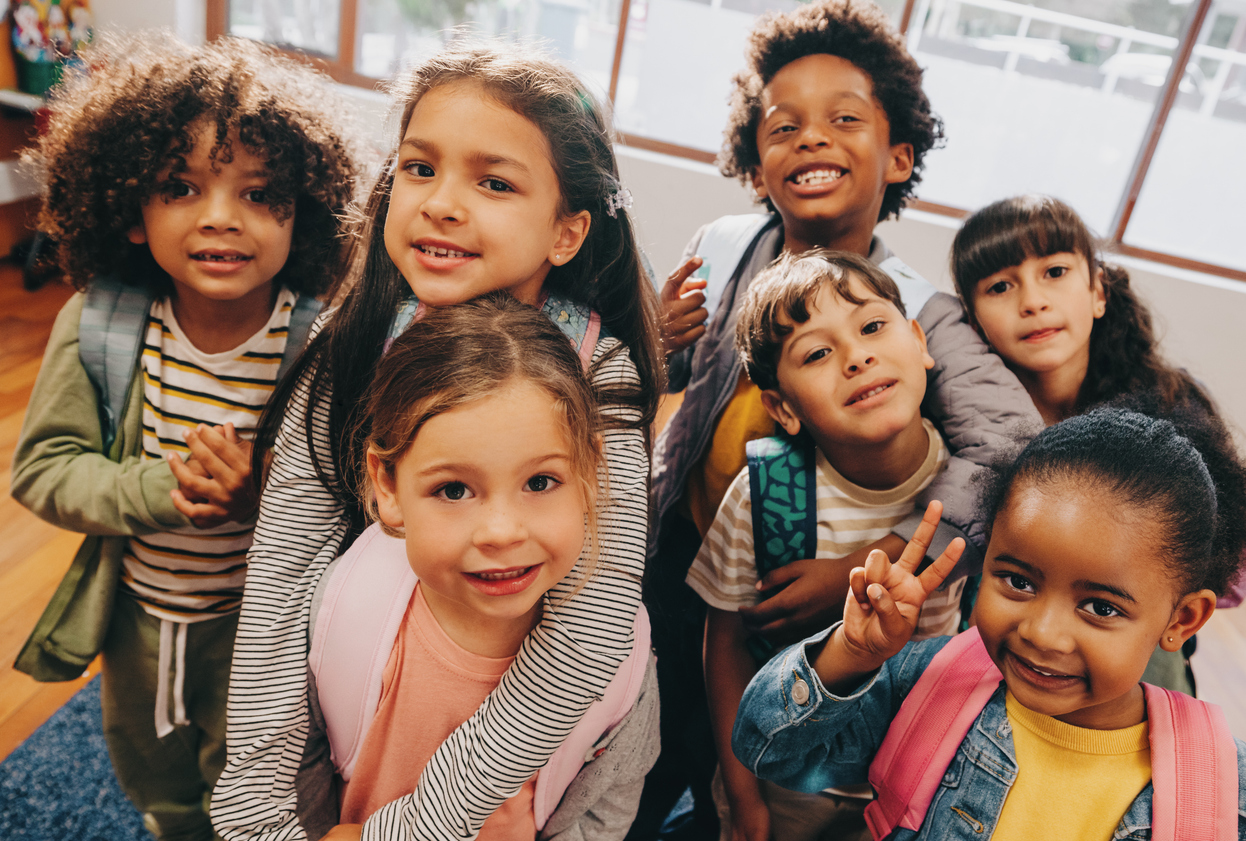Language Learning and Culture

La culture ne s’hérite pas, elle se conquiert. (Culture is not inherited, it must be earned.)
— André Malraux, France’s first Minister of Cultural Affairs
In a wonderful poem entitled “I was Taught Three,” Jorie Graham, the Boylston Professor of Oratory and Rhetoric at Harvard and one of the most celebrated American poets of the last 75 years, describes what is arguably the most important gift which the learning of multiple languages provides: not simply an appreciation for the beauty of words in their own right, but an understanding of the values, beliefs, customs and other elements which underpin the ways of life of a given community and which taken together shed light on the splendor of the human adventure as a whole.
The narrative voice begins as follows, echoing the experience of Graham herself, who as a child grew up speaking three languages: the ltalian of the country in which her expatriate family resided, the French of the Lycée Chateaubriand she attended in Rome, and the English in which she conversed with her parents and brother: “I was taught three / names for the tree facing my window / almost within reach …. / Castagno …. / Chassagne …. / And then chestnut.”
Each of the words with which she describes the tree outside her room evokes the uniqueness of the place from which it comes; yet this diversity of names also serves to deepen the poet’s sense of completeness as a person, open to the globe and in harmony with dimensions of existence that are only accessible to those who embrace the fullness of difference, including, and perhaps even beginning with linguistic difference. “I / was the stem, holding within myself the whole / bouquet of three,” pens the narrator,” reminding me of what we all hope for the students and children in our care, namely that they may find and build concord and unity in everything and everyone they encounter.
Breaking the One-Language Barrier
“The limits of my language mean the limits of my world,” affirmed the German philosopher Ludwig Wittgenstein in 1922. He was right, as educators and parents can readily attest. No matter the wording schools use to define their missions, rare is the K-12 institution that does not place language learning at the heart of its educational offerings. In New York City, the number of independent, charter and public schools embracing bilingual education has increased considerably over the past decade, while still others are commencing their second-language programs at younger ages than in the past and redoubling their efforts to harness the special role language learning plays in equipping students to lead fulfilling lives in our ever-changing, ever-accelerating epoch.
As the non-partisan nonprofit organization now known as the Partnership for 21st Century Learning explains, “Every call to action to prepare our students for the 21st century includes offering them the opportunity to learn languages other than English and increase their knowledge of other cultures (2011).” Fortunately, that exhortation is being heard, and better late than never, many would add, given that plurilingualism has long been a defining characteristic of what it signifies to be human. There are some 7,000 languages around the globe and experts estimate that approximately 50 percent of human beings use at least two languages in their daily lives. Why? We possess what the great linguist Steven Pinker calls a “language instinct,” loving as a species to express ourselves and to communicate with others, but also a passion for exploration, causing us to cross borders and to master the language-related tools that are so necessary for success in the context of an increasingly integrated planet (1994).
The More Nimble Brain
Of course, there are myriad advantages to speaking more than one language. Based on the many breakthroughs researchers have made in the field of psycholinguistics over the past few decades, we now realize how uninformed people were at the turn of the 20th century when making assertions like that made in 1890 by the influential Scottish educator Simon Somerville Laurie:
If it were possible for a child or boy to live in two languages at once equally well, so much the worse. His intellectual and spiritual growth would not thereby be doubled but halved. Unity of mind and of character would have great difficulty in asserting itself in such circumstances (quoted in Grosjean, 2010).
“Nonsense,” we can confidently claim in 2017, knowing as we do today that speaking multiple languages augments rather than diminishes our cognitive acuity.
Among the countless studies which scientists have conducted into the effects of language learning on the human brain, the work of Canadian psycholinguist Ellen Bialystok is probably the most incisive. Focusing on bilingual subjects in particular, but with conclusions that are relevant to language learners in general, Professor Bialystok has repeatedly and convincingly demonstrated how speaking two languages strengthens our executive control systems in ways that make us more intellectually sharp, agile and indestructible. In short, bilinguals are better at discerning whatever is most essential about even the most complex topics, solving problems across all manner of verbal and nonverbal domains, managing multiple tasks at the same time, capitalizing on learning in one area to advance learning in another, and resisting the neurological ramifications of aging, among many similar benefits.
As Jeffrey Kluger, senior editor and science writer at Time magazine, summarizes: “A bilingual brain is not necessarily a smarter brain, but it is proving to be a . . . more resourceful one (2013).”

Our Language Shapes Our Thoughts
In the right conditions, however, learners of languages are also learners of cultures. They become deeply versed in the cultural riches of the linguistic landscapes they little by little inhabit. More important in our day and age, they grow to be remarkably adept at understanding and valuing the cultural specificities of those same geographies, as well as communicating and collaborating with people whose frames of reference bear the imprint of such characteristics.
Readers will doubtless be aware of the regularly renewed debate about the Sapir-Whorf hypothesis, so named after the two linguists who conceived it in the first half of the 20th century. To be brief, they posited that the language we speak governs how we see the world around us. A language that, say, does not include the concept of time, or another, for instance, which has several ways of describing snow, ineluctably shapes how its users experience life, as respectively timeless or especially vibrant in winter!
Most experts would agree that linguistic determinism is unfounded, but nonetheless accept the notion of linguistic relativity, referring to the fashion in which language can influence patterns of thought, without necessarily constraining them. A great example is Japanese, wherein there are words for light blue (mizuiro) and dark blue (ao) that are not found in English or distinguished as colors by monolingual English speakers, but when learned and employed in the original can open our eyes to something which might otherwise have remained invisible (Athanasopoulos et al., 2010). Or, to stay with Japanese a while longer, another illustration is the work of pioneering psycholinguist Susan Ervin-Tripp, who asked bilingual Japanese-English speakers to complete unfinished sentences. When she posed the phrase “Real friends should … ,” one subject answered in Japanese “help each other,” but in English “be very frank” (Ervin-Tripp, 1964). Moreover, the Japanese women in this study admitted that they admired the forthrightness of their English-speaking American friends.
With Language Comes Perspective
As Adam Gopnik has written:
We are not captives of our tongues, but we are citizens of our languages. And citizenship is a broad concept that includes behavior and rituals. We approach the secret life of another language more intimately on first approach than after we have married into it. Learning a new language is like learning a new city: you see things you’ll never notice, or need, once you go to live there and are habituated by routine (2014).
In learning a new language, therefore, we engage in an act of identity not only for ourselves, because in so doing we discover who we might become, but also for our fellow speakers, to whose needs and aspirations we are progressively more sensitive (Kramsch, 1998).
Bilingual children, for example, when faced with the challenge of explaining a board and dice game to a blindfolded person as compared to a seeing person will adapt their instructions to the former far more than their monolingual counterparts will, as if speaking two languages augmented their capacity for empathy (Genesee, et al., 1975). Several studies also show that dual language speakers develop a keener aptitude for “perspective taking” on behalf of the people with whom they interact than their one-language peers (Fan, et al., 2015). So when we take into consideration the cultural fabric in which the “other” is always clothed, it would be fair to say that for a motivated language learner the kind of emotional intelligence I have been describing translates into cultural competence, too.
The Intercultural Mindset
Cultural competence, one of the most prized assets in any walk of life today, is best understood along a developmental continuum ranging from a monolingual viewpoint which denies and misses the differences between cultures to the intercultural mindset that adapts to and bridges these differences (Hammer et al., 2003). Could there be a more crucial skill to master for those working on the United Nations Sustainable Development Goals for 2030? Or for those building communities based on equity, justice and inclusion? Or for those striving merely to be successful in their jobs? Nowadays, argues renowned INSEAD business school professor Erin Meyer in her book The Culture Map:
[W]hether we work in Dusseldorf or Dubai, Brasília or Beijing, New York or New Delhi, we are all part of a global network (real or virtual, physical or electronic) where success requires navigating through wildly different cultural realities. Unless we know how to decode other cultures and avoid easy-to-fall-into cultural traps, we are easy prey to misunderstanding, needless conflict, and ultimate failure (Meyer, 2014).
And such failure will result not only from a dearth of interpersonal connectedness, but also from a scarcity of that particularly central ingredient of a thriving existence in the 21st century: creativity, which further research from the last decade has shown to be greater among those who master two languages than it is for monolingual speakers.
Connecting the Dots
On the well-regarded Torrance test of creative thinking, for example, bilingual students, when presented with a problem to solve, come up with more ideas, across more categories of possibility and with more detail each time than their one-language counterparts (Kharkhurin, 2008). The cognitive strengths outlined above may partly explain these results.
That said, I cannot help but think of what Steve Jobs once said about diversity, something which speaking multiple languages fosters so well, both literally and figuratively. Here is Jobs, in a legendary 1996 interview with Wired magazine:
Creativity is just connecting things. When you ask creative people how they did something, they feel a little guilty because they didn’t really do it, they just saw something. . . . That’s because they were able to connect experiences they’ve had and synthesize new things. And the reason they were able to do that was that they’ve had more experiences . . . . Unfortunately, that’s too rare a commodity. A lot of people . . . haven’t had very diverse experiences. . . . The broader one’s understanding of the human experience, the better design we will have (1996).
In sum, languages, and the cultures they reflect, create more connecting dots, but dots with meaning which would otherwise be lost.
Our Call to Action
Ultimately, the key message we might wish to take from our mounting insights into the full promise of language learning, not to mention the exceptional potential of the world around us, is quite straightforward. To say the least, it is incumbent upon us to give our students and children every opportunity to acquire Spanish, Mandarin, German, Arabic and any additional language other than English they might wish to learn and to do so by emphasizing the cultural significance and magnificence of that undertaking. Rooting them in the literature, arts and other manifestations of their first cultures is vital, bien entendu. Yet immersing them in those same expressions on the part of an “other,” different from but ever so complementary to themselves, is more essential still.
Selected Bibliography
Athanasopoulos, Panos, et al. “Representation of Colour Concepts in Bilingual Cognition: The Case of Japanese Blues.” Bilingualism: Language and Cognition, vol. 14, no. 01, 2010, pp. 9–17.
Dreifus, Claudia. “A Conversation with … Ellen Bialystok.” The New York Times, 30 May 2011.
Ervin-Tripp, Susan. “An Analysis of the Interaction of Language, Topic, and Listener.” American Anthropologist, vol. 66, no. 6_PART2, 1964, pp. 86–102.
Fan, Samantha P., et al. “The Exposure Advantage.” Psychological Science, vol. 26, no. 7, Aug. 2015, pp. 1090–1097.
Genesee, F., et al. “Communication Skills of Bilingual Children.” Child Development, vol. 46, no. 4, 1975, p. 1010.
Gopnik, Adam. “Word Magic: How Much Really Gets Lost in Translation?” The New Yorker, 26 May 2014.
Graham, Jorie. Hybrids of Plants and of Ghosts. Princeton, Princeton University Press, 2011.
Grosjean, François. Bilingual: Life and Reality. Cambridge, MA., Harvard University Press, 2012.
Hammer, Mitchell R., et al. “Measuring Intercultural Sensitivity: The Intercultural Development Inventory.” International Journal of Intercultural Relations, vol. 27, no. 4, 2003, pp. 421–443.
Kharkhurin, Anatoliy V. “The Effect of Linguistic Proficiency, Age of Second Language Acquisition, and Length of Exposure to a New Cultural Environment on Bilinguals Divergent Thinking.” Bilingualism: Language and Cognition, vol. 11, no. 02, 2008.
Kluger, Jeffrey. “The Power of the Bilingual Brain.” Time, 29 July 2013.
Kramsch, Claire. Language and Culture. Oxford: Oxford University Press, 1998.
Meyer, Erin. The Culture Map: Breaking Through the Invisible Boundaries of Global Business. New York, PublicAffairs, 2014.
Partnership for 21st Century Learning. “21st Century Skills Map for World Languages” (2011).
Pinker, Steven. The Language Instinct: The New Science of Language and Mind. London, Allen Lane, 1994.
Wittgenstein, Ludwig. Tractatus Logico-Philosophicus. Mineola, NY, Dover Publications, 1999.
Wolf, Gary. “Steve Jobs: The Next Insanely Great Thing.” Wired, 1 Feb. 1996.
Sean Lynch is the Former Head of School at Lycée Français de New York, a bilingual pre-K through 12th grade school in Manhattan. He is the recipient of the French government’s Ordre des Palmes Académiques and the European Council of International Schools’ Award for the Promotion of International Education.
This article first appeared in the 2018 issue of the Parents League Review. Get the current issue of the Review free with a family membership. Or purchase it separately.











